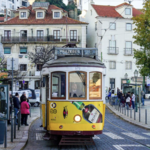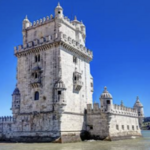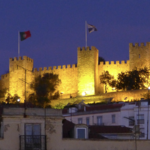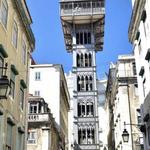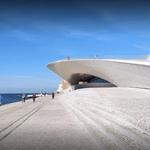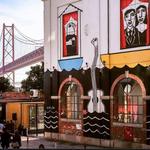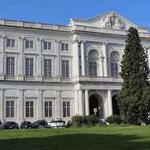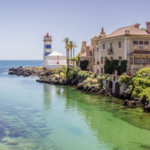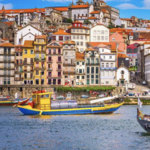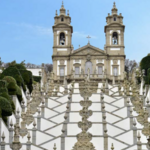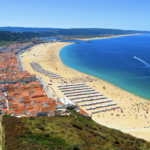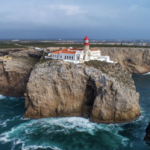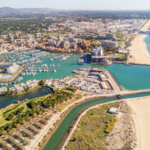Our Wedding
Places to See & Things To Do
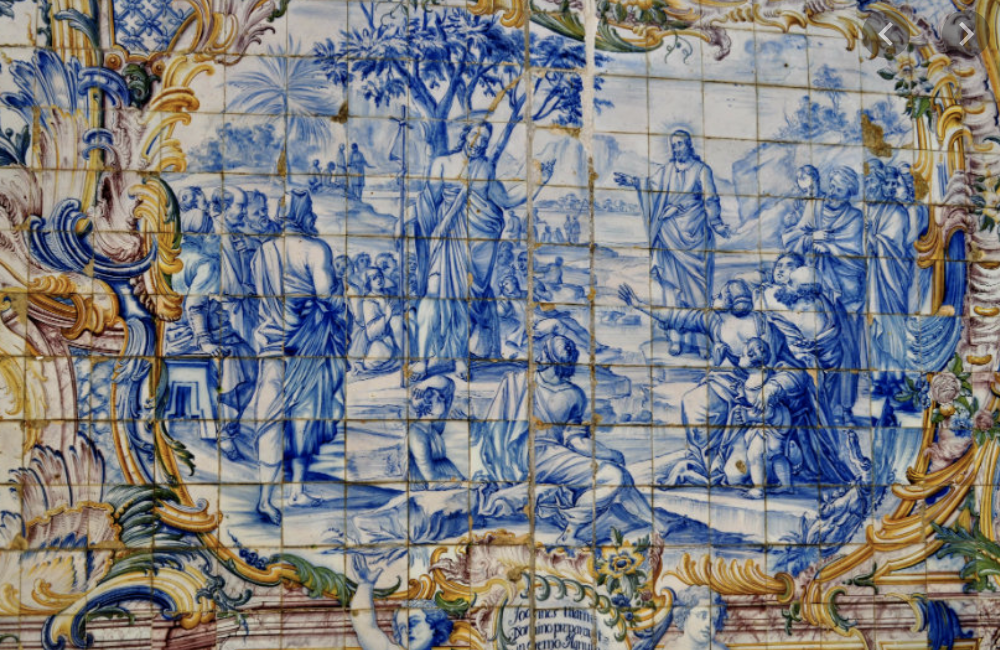
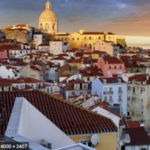
Alfama - Lisbon Neighborhood
Alfama is perhaps the most charming part of Lisbon, not to mention its oldest district. This is the place to go if you want to eat a traditional meal accompanied by equally traditional fado music. Narrow, winding medieval alleys are common all over Lisbon but nowhere more so than in Alfama, where the roads have been described as labyrinthine
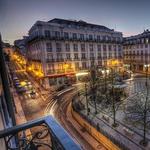
Bairro Alto - Lisbon Neighborhood
If you want to know where everyone is on Saturday night, chances are good that it’s Bairro Alto. This windy, hilly neighbourhood is filled with bars and has a bohemian vibe, making it one of the coolest places in the city. There are also restaurants, cafés, tattoo parlours and hostels in addition to the ever-present historical landmarks" - www.culturetrip.com

Alcântara - Lisbon neighborhood
"Technically, Alcântara is a parish of the district of Lisbon but locals consider it part of the city. Situated between downtown and Belém, it’s a neighbourhood along the river where visitors will find Docas de Santo Amaro (a dock filled with bars and restaurants) and the LX Factory (a renovated factory building complex that’s been converted into shops, offices, restaurants and more)." www.culturetrip.com

Baixa & Rossio - Lisbon Neighborhood
"The most tourist-friendly neighbourhood during the day is that between Baixa and Rossio, where many of Lisbon’s main landmarks, shopping and dining opportunities can be found. Although ‘downtown’ is a term used loosely to describe a few neighbourhoods, this is Lisbon’s real downtown area. It is also the main part of the city that was destroyed during the famous earthquake of 1755 and rebuilt in the late 18th century. A few key sites include Livraria Bertrand (the oldest bookstore in the world still trading), the elaborate Brasileira café, the elegant, bright-yellow Praça do Comércio and the Rossio train station." - www.culturetrip.com
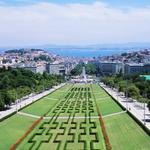
Avenida da Liberdade - Lisbon neighborhood
"If you want to buy designer clothes, Avenida da Liberdade is where to go. Built in the late 19th century, it runs between Rossio train station in the south and Parque Eduardo in the north. Magnificent hotels and banks are found here, as well as names such as Burberry and Armani." www.culturetrip.com
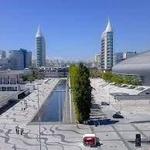
Parque das Nações -Lisbon neighborhood
"Parque das Naçoes is a modern area where the Oriente train station and the Oceanário de Lisboa are located. It was built to accommodate Expo ’98 and stands today as a living memory of that event. A number of restaurants and bars can be found on the strip along the river, as well as clubs." -www.culturetrip.com
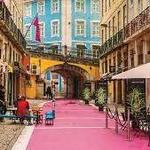
Cais do Sodre - Lisbon neighborhood
"The last terminal metro stop (before heading towards Alcântara and Belém) is in Cais do Sodré. From here, travellers can hop on a ferry and sail across the Tejo River to cities such as Almada on the other side. Like Bairro Alto, Cais do Sodré is a cool neighbourhood to enjoy beer and catch up with friends. The Time Out Market, or Mercado da Ribeira, is one of the city’s main food courts that offers everything from traditional meals to trendy treats and bakeries. It is also the home of the colourful Pink Street, full of bars, restaurants and artistic personality" - www.culturetrip.com
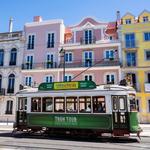
Príncipe Real - Lisbon Neighborhood
"This trendy neighbourhood is west of Avenida da Liberdade and north of Bairro Alto. The buildings here are grander than many other neighbourhoods in Lisbon, giving it an expensive air; its name even translates into “royal prince”. Príncipe Real is a residential neighbourhood but doubles as a social district, filled with stores and gardens." - www.culturetrip.com
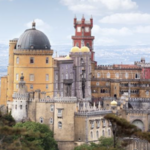
Sintra
With its rippling mountains, dewy forests thick with ferns and lichen, exotic gardens and glittering palaces, Sintra is like a page torn from a fairy tale. Its Unesco World Heritage–listed centre, Sintra-Vila, is dotted with pastel-hued manors folded into luxuriant hills that roll down to the blue Atlantic.
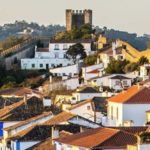
Óbidos
The captivating town of Óbidos became home to Portugal’s queens after Afonso II gifted it to his wife Urraca of León in the 1200s. Many of the buildings and monuments in were founded or funded by a queen. On a narrow ridge, the town’s weaving, carless streets are contained by the dominant walls of a medieval castle.
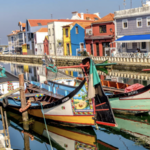
Aveiro
It may sound like Venice, but Aveiro, in central Portugal, is a smaller, more relaxed affair. No hordes of tourists here! Aveiro is a fishing city on the west coast of Portugal set along a lagoon called Ria de Aveiro. It's distinguished by its canals navigated by colorful boats (barcos moliceiros), traditionally used to harvest seaweed.
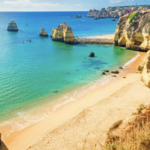
Faro District
The Algarve, Portugal’s southernmost region, is known for its Atlantic beaches. Whitewashed fishing villages on low cliffs overlooking sandy coves were transformed in the 1960s, and now its central coast between Lagos and Faro is lined with villas, hotels, bars and restaurants. The region's western Atlantic coast and rugged interior are less developed.

Evora
From Romans to Moors to Portuguese kings, the proud little town of Évora — set amid the cork groves of Portugal's Alentejo region.has a big history. Just 90 minutes east of Lisbon, Évora has impressive sights — Roman ruins, a 12th-century cathedral and a macabre chapel of bones — coupled with a laid-back local scene and a hearty cuisine!
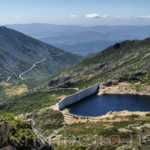
Serra da Estrela
The Serra da Estrela is the highest mountain range in mainland Portugal and an excellent destination for anyone interested in exploring Portuguese nature and the countryside. Reaching over 1,990 meters (6,529) high, most people get to the top via car, but many like to trek parts of the mountain on foot. Dotted with charming villages and covered in breathtaking natural landscapes, this part of Portugal is full of unique culture and unparalleled sights.
